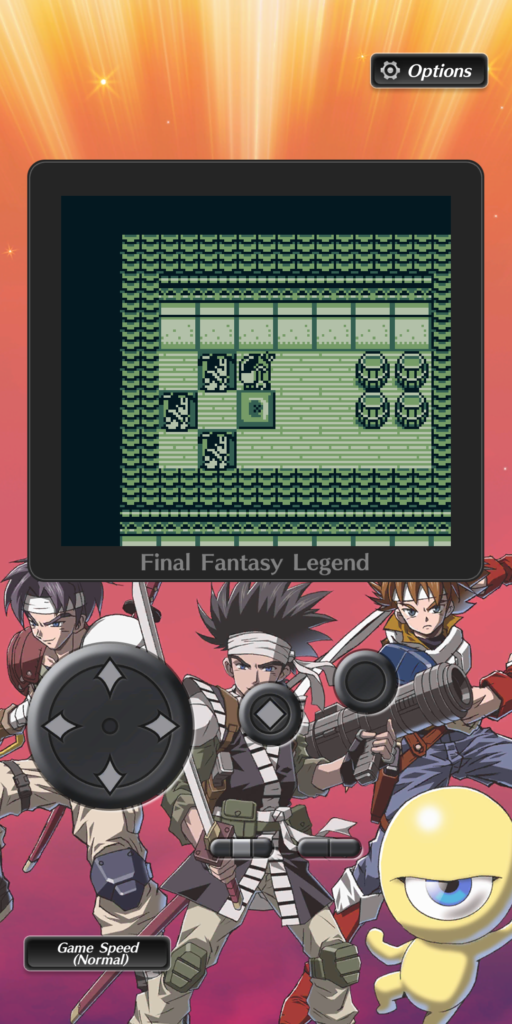Some news, Strange Journey Redux
First off – it’s been awhile since I posted. Normally I’d say “real life”, which is also true, but I’ve been writing for VL (among other things – reviews of a couple SaGa games, some longer last-decade retrospective stuff, and working on a review of SMT5 still to come).
I’ve made a minor (or major, I guess, if you’re here for some stuff) tweak to the site – I discovered the encoding was off, which I think was a result of some mySQL migration along the way. As a result the Game Dev Story guide actually displays Japanese characters appropriately. There are probably some other pages that were broken, but none come to mind offhand.
I struggle to write things that aren’t reviews. Honestly, I kind of struggle to write reviews, because I try to be objective. Sometimes it means I qualify too much (game X is like game Y in that … … which loses anyone who didn’t play game Y). Other times it means I try to remove the emotion from writing a review, which means that I don’t capture the essence of how a game makes me feel. That’s an important essence of a review – for example, to take a game I’ll never review – the Cook, Serve, Delicious! games are interesting to me in how they make me enter a hybrid state that oscillates between panic and flow. On one level, that’s gratifying because never having a state of panic would make things uninteresting, and “flow” is one of my favorite aspects of my job. On another, it’s off-putting because it’s a little too much like my job.
I guess it’s another aspect of why I like and hate writing. Communicating using only words (and the occasional image) is difficult. But then, communication in general is hard. I find that readers on VL typically understand the point I’m trying to make better than I do – one of many reasons I’m grateful it’s back in existence.
Anyway, I decided to write something about Shin Megami Tensei: Strange Journey Redux, which is the actual reason I started putting finger to keyboard. I’m far short of completing the game – having only gotten partway through the second sector. Having not completed the original, I’m sure that I have quite the dungeon-dive ahead of me. But I wanted to mention the incredible, hostile atmosphere that the game has. In contrast to its series cousins, Strange Journey not only has a more mature cast, it takes clear inspiration from science fiction horror. It goes past “disaster” into “isolation in a hostile environment” with the Red Sprite and its crew stranded in the mysterious Schwarzwelt – itself an apparent natural disaster, hinted to be a consequence of humanity’s excesses. The atmosphere plays into the Shin Megami Tensei series’ strengths – with the nails-hard early difficulty mirroring the crew’s first fights with demons, and the pseudo-mythical SMT designs hinting at the Schwarzwelt’s human-derived origins. As soon as the first sector seems knowable, Strange Journey starts throwing new things at you – first a second floor that is different from the first, then a new cast of demons, then one-way doors – in a way that keeps things fresh from a gameplay perspective, but also hints at the oppressive environment that you’re in.
Although Strange Journey has a limited cast, the crew members that you do meet all serve to reinforce the hostile atmosphere of the Schwarzwelt – as hardened warriors, analysts, and engineers all react to their surroundings in different ways. Some crack under the pressure, while others try to focus on the mission. The dispassionate Arthur, AI for the Red Sprite and your de facto quest source, serves as an effective foil throughout. Even as the player knows Arthur’s instructions and observations are correct, its lack of emotional reaction to the surroundings makes it seem somehow untrustworthy – and likewise, much of the crew struggles to cope and comprehend with what is going on.
Meanwhile, when you start a conversation with demons and discover just how capricious they are, it serves to reinforce the feeling of danger – it’s not just that the demons are explicitly hostile to you. Many of them can be engaged in conversation where you find out they are well aware how jacked up the state of the human world is, occasionally giving you the option to defend human behavior or suggest ways to fix it (alongside more mundane conversation topics). And although they might be sympathetic and even join you if you play your cards right, they will just go back to fighting you in most cases.
More to come…
